10 Herbal Teas For Migraine
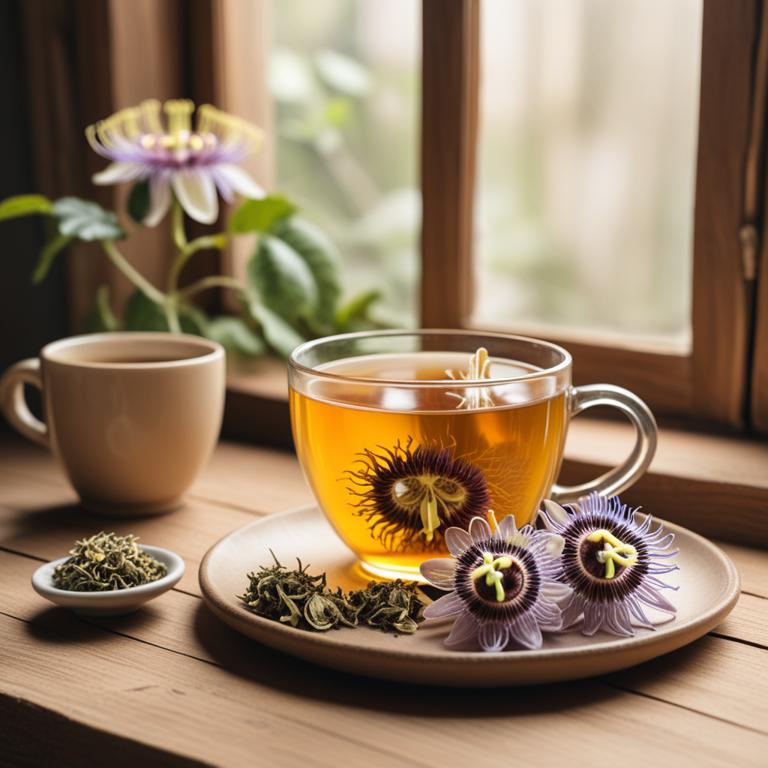
Herbal teas can be a great help if you suffer from migraines.
These teas work by calming your mind and body, which can help to ease migraine symptoms. Zingiber officinale, also known as ginger, is one example of an herbal tea that can help. Ginger has anti-inflammatory properties that can help to reduce pain and swelling. Another example is Valeriana officinalis, or valerian root tea. This tea is known for its calming effects, which can help to relax your muscles and reduce stress. Stress is a common trigger for migraines, so valerian root tea can be a useful tool in managing them.
Foeniculum vulgare, or fennel, is another herbal tea that may help with migraines. Fennel has a compound called anethole, which has anti-inflammatory properties and can help to reduce pain. Drinking fennel tea may also help to ease nausea and digestive issues that often come with migraines. Drinking herbal teas can bring many benefits to your life. For one, they can help you to relax and reduce stress, which is essential for managing migraines. Herbal teas can also help you to get a good night's sleep, which is often disrupted by migraine symptoms. Additionally, herbal teas are a natural and non-invasive way to manage your symptoms, making them a great alternative to medication.
By incorporating herbal teas into your daily routine, you can take control of your migraines and improve your overall well-being.
- 1. Zingiber officinale
- 2. Valeriana officinalis
- 3. Foeniculum vulgare
- 4. Lavandula angustifolia
- 5. Ginkgo biloba
- 6. Rosmarinus officinalis
- 7. Melissa officinalis
- 8. Mentha x piperita
- 9. Cinnamomum verum
- 10. Passiflora incarnata
1. Zingiber officinale

Zingiber officinale teas contains compounds like gingerols and shogaols, which have anti-inflammatory properties that can help alleviate migraine symptoms.
These compounds work by blocking the production of prostaglandins, hormone-like substances that cause blood vessels to swell and lead to pain. Gingerols and shogaols also have a direct effect on the trigeminal nerve, which is often responsible for migraine headaches. The anti-inflammatory and pain-relieving properties of Zingiber officinale teas can help reduce the frequency and severity of migraines by reducing inflammation and relieving pain.
By consuming Zingiber officinale teas, some people may find relief from migraine symptoms due to its bioactive constituents and their effects on the body.
- Get 1 teaspoon of fresh or dried Zingiber officinale root.
- Boil 1 cup of water in a pot.
- Add the Zingiber officinale root to the boiling water and let it steep for 5-7 minutes.
- Strain the mixture into a cup and discard the root.
- Drink the tea while it's still warm, 2-3 times a day, as needed to help relieve migraine symptoms.
Zingiber Officinale Tea on Amazon
FGO Organic Ginger Tea, 100 Count, Eco-Conscious Tea Bags, Caffeine Free, Packaging May Vary (Pack of 1)
Disclaimer: We earn a commission if you click this link and make a purchase at no additional cost to you.
2. Valeriana officinalis
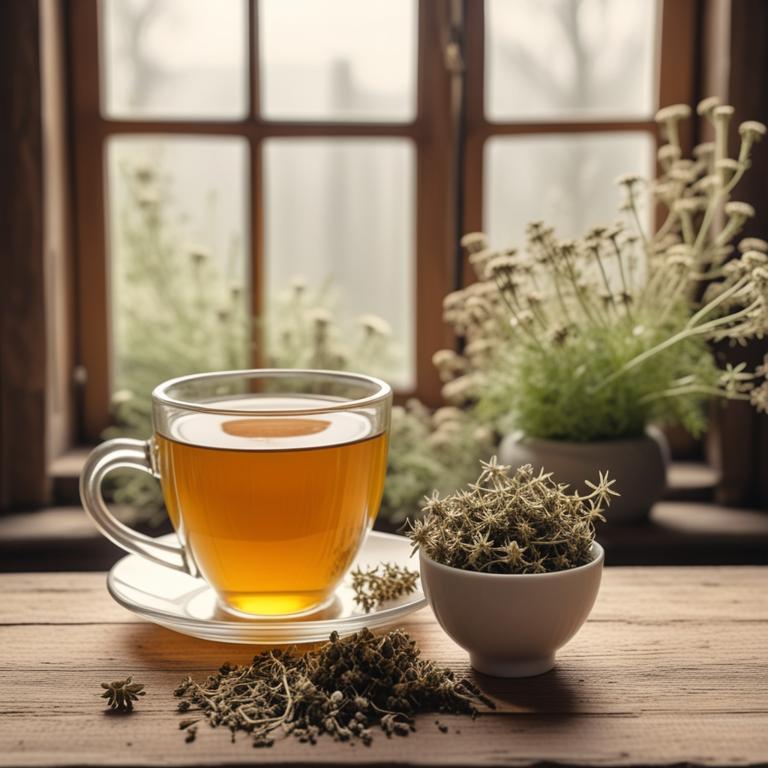
Valeriana officinalis teas contains a group of bioactive constituents, including isovaleric acid, valerenic acid, and valepotriates, which have a sedative effect on the nervous system.
These compounds help to reduce the frequency and severity of migraines by decreasing inflammation and calming the blood vessels in the brain. The valepotriates in Valeriana officinalis teas have a relaxing effect on the muscles, which can help to alleviate the pressure and pain associated with migraines. The sedative properties of isovaleric acid and valerenic acid also help to reduce anxiety and stress, which are common triggers for migraines.
By reducing inflammation and promoting relaxation, Valeriana officinalis teas can help to alleviate the symptoms of migraines and provide relief from this debilitating condition.
- Gather 1 cup of fresh or dried Valeriana officinalis roots.
- Measure 1 tablespoon of the roots and put them in a tea infuser.
- Boil 1 cup of water in a kettle or pot.
- Steep the Valeriana officinalis roots in the boiling water for 5-7 minutes.
- Strain the tea and drink it warm or at room temperature. Repeat as needed for migraine relief.
3. Foeniculum vulgare
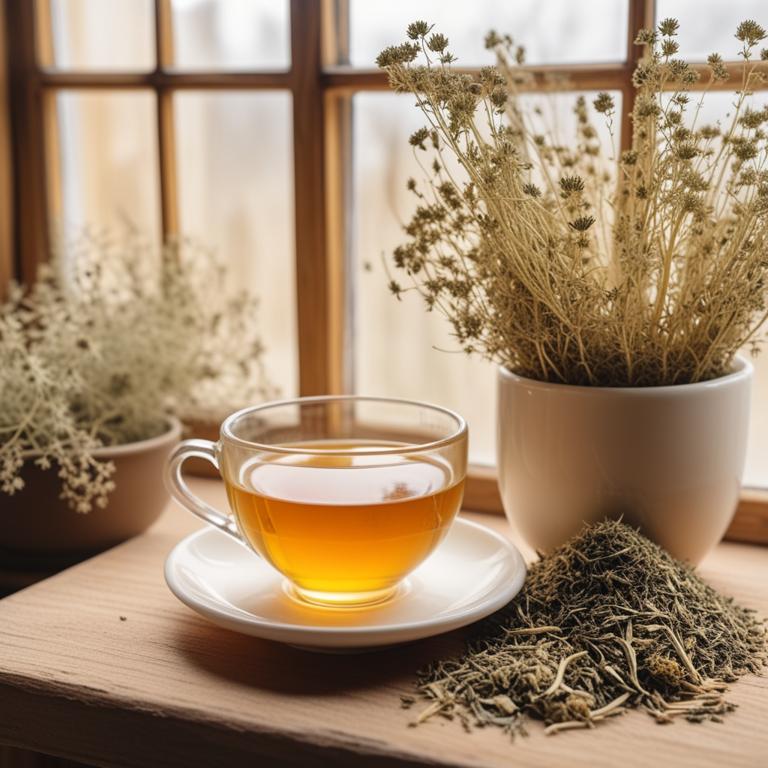
Foeniculum vulgare teas contains compounds like anethole, limonene, and fenchone that make it effective in reducing migraine symptoms.
Anethole has anti-inflammatory properties that help in reducing swelling and pain in the blood vessels that cause migraines. Limonene has a calming effect on the nervous system, which can help alleviate migraine-related stress and anxiety. Fenchone has a sedative effect, which can help regulate sleep patterns and reduce migraine frequency.
The combination of these bioactive constituents in Foeniculum vulgare teas may help in reducing migraine severity and frequency by addressing the underlying causes of the condition.
- Gather ingredients: 1 cup of water, 1 tablespoon of dried Foeniculum vulgare seeds (anise seeds), and a tea infuser.
- Measure 1 tablespoon of dried Foeniculum vulgare seeds and place them in the tea infuser.
- Boil 1 cup of water in a pot and let it cool for 1-2 minutes.
- Place the tea infuser with the Foeniculum vulgare seeds in the boiled water and let it steep for 5-7 minutes.
- Strain the tea and drink it hot or let it cool down before consumption.
4. Lavandula angustifolia

Lavandula angustifolia teas contains linalool and linalyl acetate, two potent bioactive constituents that play a key role in its beneficial effects on migraines.
These compounds have a calming effect on the nervous system, which can help to reduce inflammation and spasms in blood vessels, a common cause of migraines. The relaxing properties of linalool and linalyl acetate can also help to ease muscle tension and promote better sleep, which are often disrupted by migraine attacks. Furthermore, the antioxidant and anti-inflammatory properties of these compounds may help to reduce oxidative stress and inflammation in the brain, which can contribute to migraine development.
By reducing inflammation and promoting relaxation, Lavandula angustifolia teas may help to alleviate migraine symptoms and provide relief.
- Gather 1 cup of fresh Lavandula angustifolia flowers or 2 teaspoons of dried flowers.
- Heat 1 cup of water until it reaches 212°F (100°C).
- Pour the hot water over the Lavandula angustifolia flowers in a cup.
- Steep for 5-7 minutes. Strain the tea using a tea infuser or a piece of cheesecloth.
- Drink 1/2 cup of the tea, 2-3 times a day, to help alleviate migraine symptoms.
5. Ginkgo biloba

Ginkgo biloba teas contains bioactive constituents such as flavonoids and terpenoids.
These compounds have anti-inflammatory and antioxidant properties that help reduce blood vessel spasms and inflammation in the brain. The flavonoids, including quercetin and kaempferol, have a calming effect on the blood vessels, reducing the frequency and severity of migraines. The terpenoids, including bilobalide and ginkgolides, have a protective effect on the blood vessels and can help reduce the release of pain-causing chemicals in the brain.
By reducing inflammation and promoting blood vessel relaxation, Ginkgo biloba teas can help alleviate migraine symptoms.
- Gather 1 teaspoon of dried Ginkgo biloba leaves and 1 cup of boiling water.
- Steep the Ginkgo biloba leaves in the boiling water for 5-7 minutes.
- Strain the liquid into a cup to remove the leaves.
- Add 1 tablespoon of honey to the tea (optional) and stir well.
- Drink the tea 2-3 times a day to help alleviate migraine symptoms.
6. Rosmarinus officinalis

Rosmarinus officinalis teas contains rosmarinic acid, a powerful antioxidant that helps reduce inflammation in the blood vessels of the brain, which can cause migraines.
This herb also contains carnosic acid and borneol, which have anti-inflammatory and antispasmodic properties, helping to relax and soothe blood vessels and muscles. Rosmarinus officinalis teas has a calming effect on the nervous system, which can help reduce stress and anxiety, common triggers for migraines. The herb's ability to reduce inflammation and promote relaxation makes it a helpful natural remedy for migraine sufferers.
By drinking Rosmarinus officinalis teas, people may experience relief from migraine symptoms, such as pain and sensitivity to light and sound.
- Gather 1 cup of boiling water and 1 tablespoon of dried Rosmarinus officinalis leaves.
- Measure 1 teaspoon of dried Rosmarinus officinalis leaves into a tea infuser or a small muslin bag.
- Pour the boiling water over the Rosmarinus officinalis leaves in the tea infuser or muslin bag.
- Let the tea steep for 5-7 minutes, then remove the leaves from the water.
- Strain the tea into a cup and drink it slowly to help relieve migraine symptoms.
7. Melissa officinalis

Melissa officinalis teas contains rosmarinic acid, apigenin, and luteolin as its bioactive constituents.
These compounds have anti-inflammatory and antioxidant properties that help reduce migraine symptoms. Rosmarinic acid, in particular, has been shown to inhibit the production of pro-inflammatory enzymes, which contribute to migraine pain. Apigenin and luteolin have been found to have a calming effect on the nervous system, which can help alleviate migraine-related anxiety and stress.
By reducing inflammation and promoting relaxation, Melissa officinalis teas may provide relief from migraine symptoms.
- Gather 1 cup of fresh Melissa officinalis leaves or 1 teaspoon of dried leaves.
- Heat 1 cup of water in a pot until it boils.
- Add the Melissa officinalis leaves to the boiling water and remove from heat.
- Let it steep for 5-7 minutes, then strain the mixture into a cup.
- Drink the tea as needed to help relieve migraine symptoms.
8. Mentha x piperita
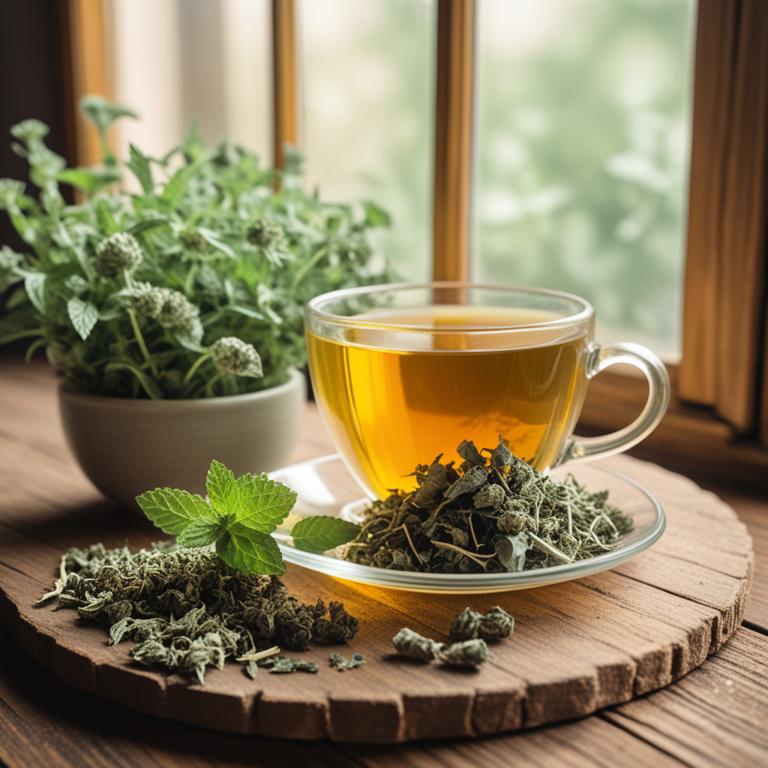
Mentha x piperita teas contains menthol, menthone, and limonene as its active constituents.
These compounds have anti-inflammatory and pain-relieving properties, which can help reduce migraine symptoms. Menthol, in particular, has a cooling effect that can help ease tension and relax the muscles in the neck and scalp, areas often affected by migraines. The antispasmodic properties of menthone and limonene can also help relax blood vessels and reduce inflammation, further alleviating migraine pain.
As a result, drinking Mentha x piperita teas may provide relief from migraine symptoms and help manage this condition.
- Gather 1 cup of fresh peppermint leaves (Mentha x piperita) and 1 cup of boiling water.
- Add 2 tablespoons of fresh peppermint leaves to a heat-resistant cup or teapot.
- Pour 1 cup of boiling water over the peppermint leaves and let it steep for 5-7 minutes.
- Strain the tea into a separate cup and discard the peppermint leaves.
- Drink the tea slowly and as needed to help relieve migraine symptoms.
9. Cinnamomum verum
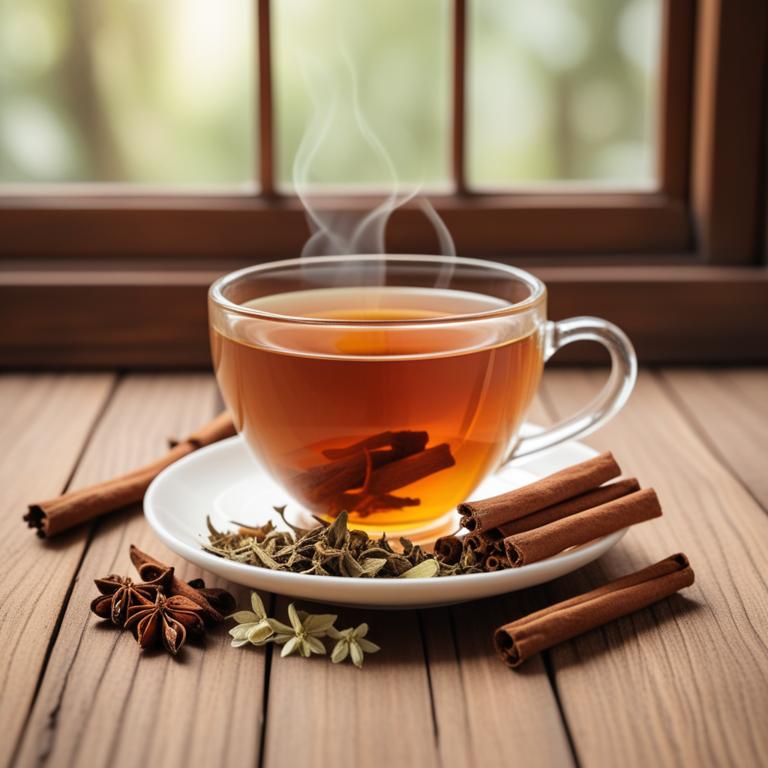
Cinnamomum verum teas contains essential oils like linalool and eugenol, which are known for their pain-relieving properties.
These oils work by blocking the production of prostaglandins, hormone-like substances that trigger pain and inflammation in the body. The anti-inflammatory properties of linalool and eugenol also help to reduce swelling and ease pressure on blood vessels, which can contribute to migraine headaches. Additionally, Cinnamomum verum teas has a natural ability to constrict blood vessels, which can help to reduce the frequency and severity of migraine attacks.
This makes Cinnamomum verum teas a potential natural remedy for managing migraine symptoms.
- Gather 2 tablespoons of Cinnamomum verum bark and 1 cup of boiling water.
- Steep the Cinnamomum verum bark in boiling water for 5-7 minutes.
- Strain the mixture into a cup using a fine mesh sieve or cheesecloth.
- Add honey to taste, if desired, and stir well to combine.
- Drink the tea slowly and wait for relief from migraine symptoms.
10. Passiflora incarnata

Passiflora incarnata teas contains flavonoids, including kaempferol and quercetin, which are known for their anti-inflammatory and antioxidant properties.
The tea also contains glycosides, such as passiflorine, which have been shown to have a sedative effect on the nervous system, helping to reduce anxiety and stress that can trigger migraines. The flavonoids and glycosides in Passiflora incarnata tea may also help to relax blood vessels and improve blood flow to the brain, which can help to alleviate migraine symptoms. The tea's anti-inflammatory properties may also help to reduce pain and inflammation associated with migraines.
By reducing anxiety, improving blood flow, and reducing inflammation, Passiflora incarnata tea may be a helpful natural remedy for managing migraine symptoms.
- Gather 1 cup of fresh Passiflora incarnata leaves and flowers. You can use 1/4 cup dried leaves and flowers as a substitute.
- Boil 1 cup of water in a pot.
- Add 1 tablespoon of fresh leaves and flowers to the boiling water. If using dried leaves, add 1/2 tablespoon.
- Reduce heat and let it simmer for 5-7 minutes. Strain the tea after it has cooled slightly.
- Drink 1/2 to 1 cup of the tea, 2-3 times a day, as a potential migraine relief remedy.